Abstract
A multifaceted behavioral program designed to teach emergency fire escape procedures to children was evaluated in a multiple-baseline design. Five children were trained to respond correctly to nine home emergency fire situations under simulated conditions. The situations and responses focused upon in training were identified by a social validation procedure involving consultation with several safety agencies, including the direct input of firefighters. Training, carried out in simulated bedrooms at school, resulted in significant improvements in both overt behavior and self-report of fire safety skills. The gains were maintained at a post-check assessment 2 weeks after training had been terminated. The results are discussed in relation both to the importance of social validation of targets and outcomes and the implications for further research in assessing and developing emergency response skills.
Full text
PDF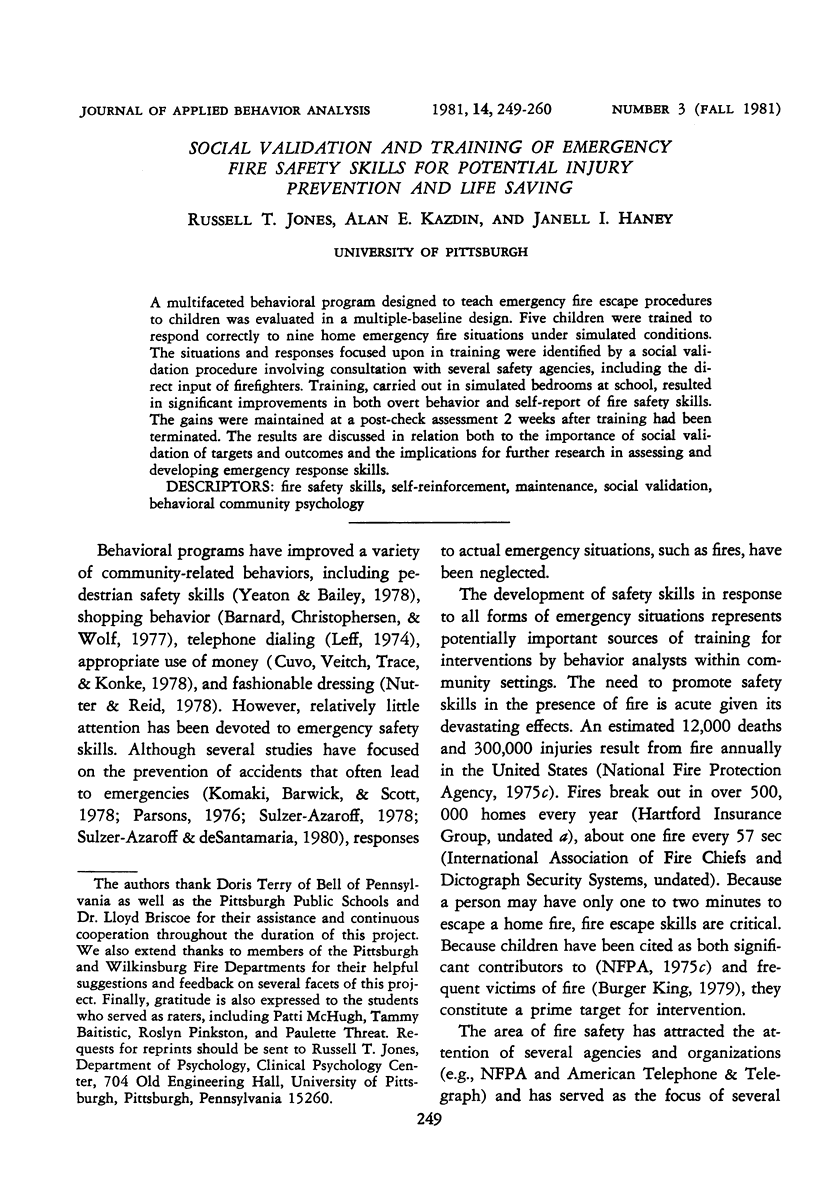
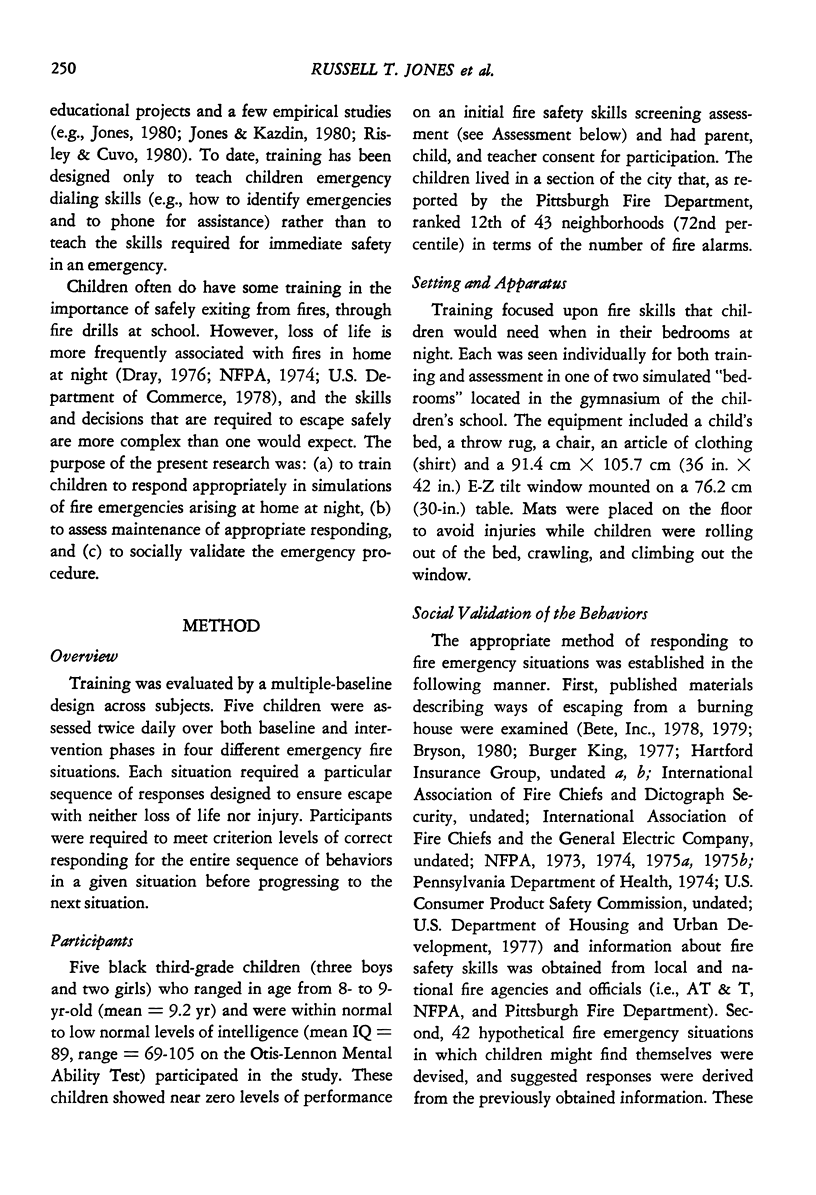
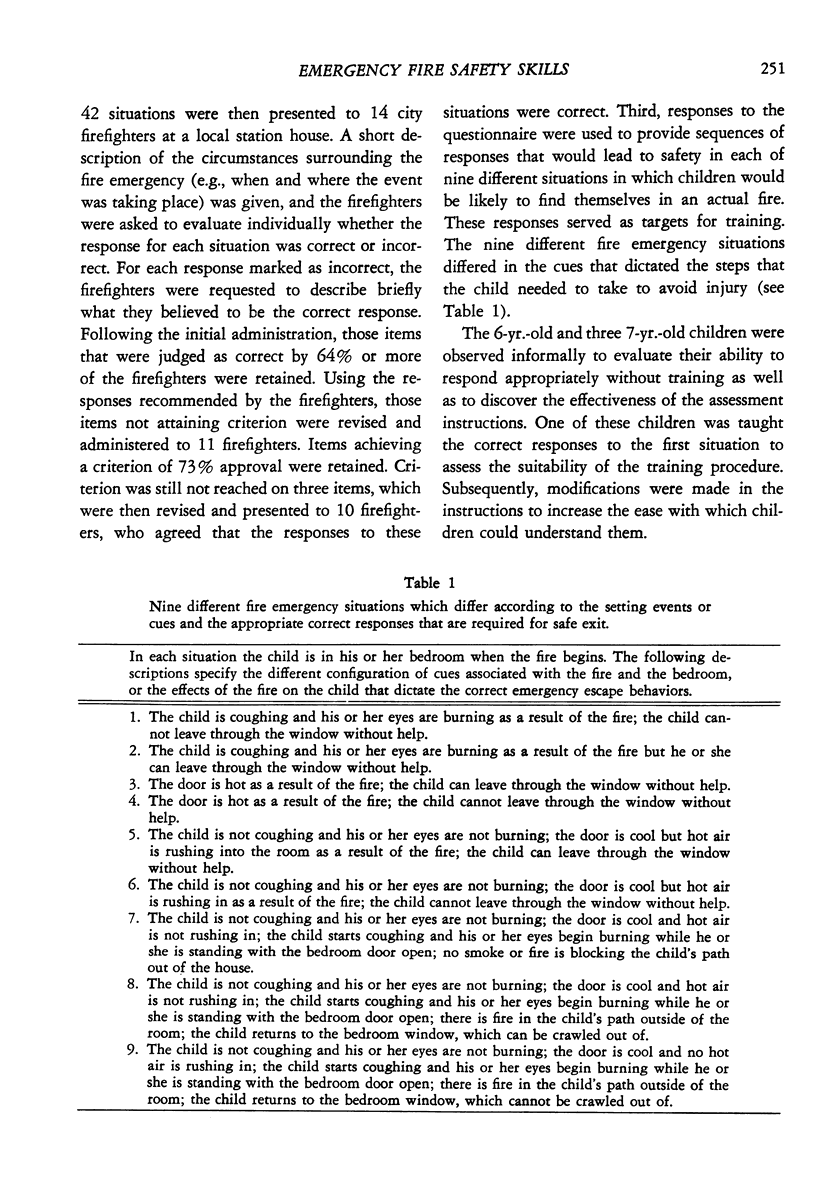
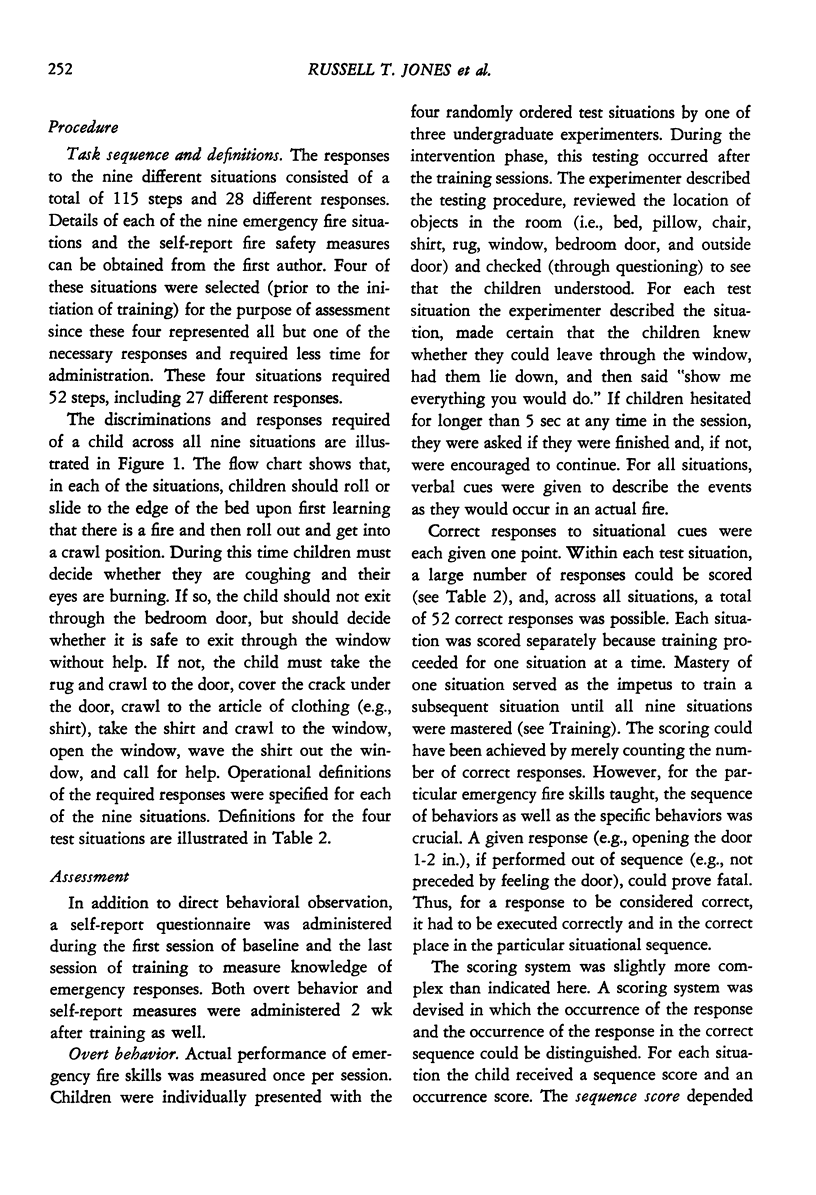
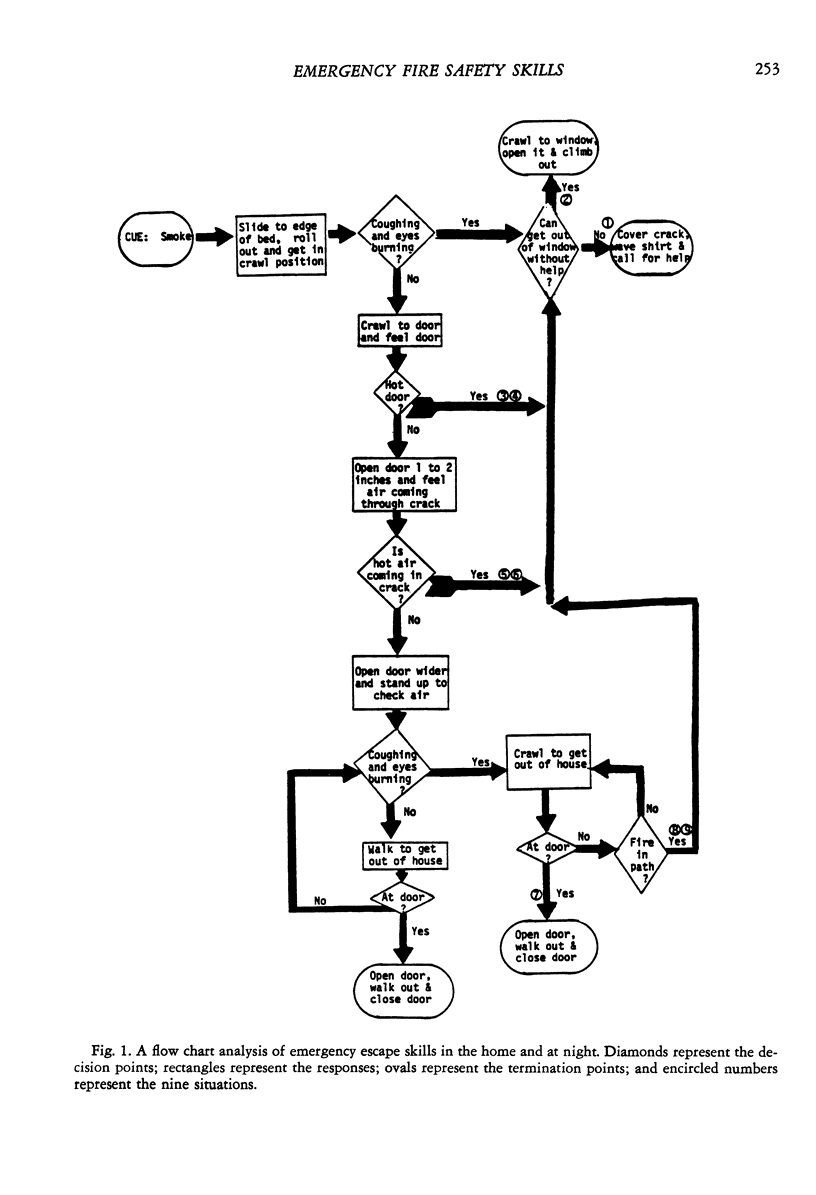
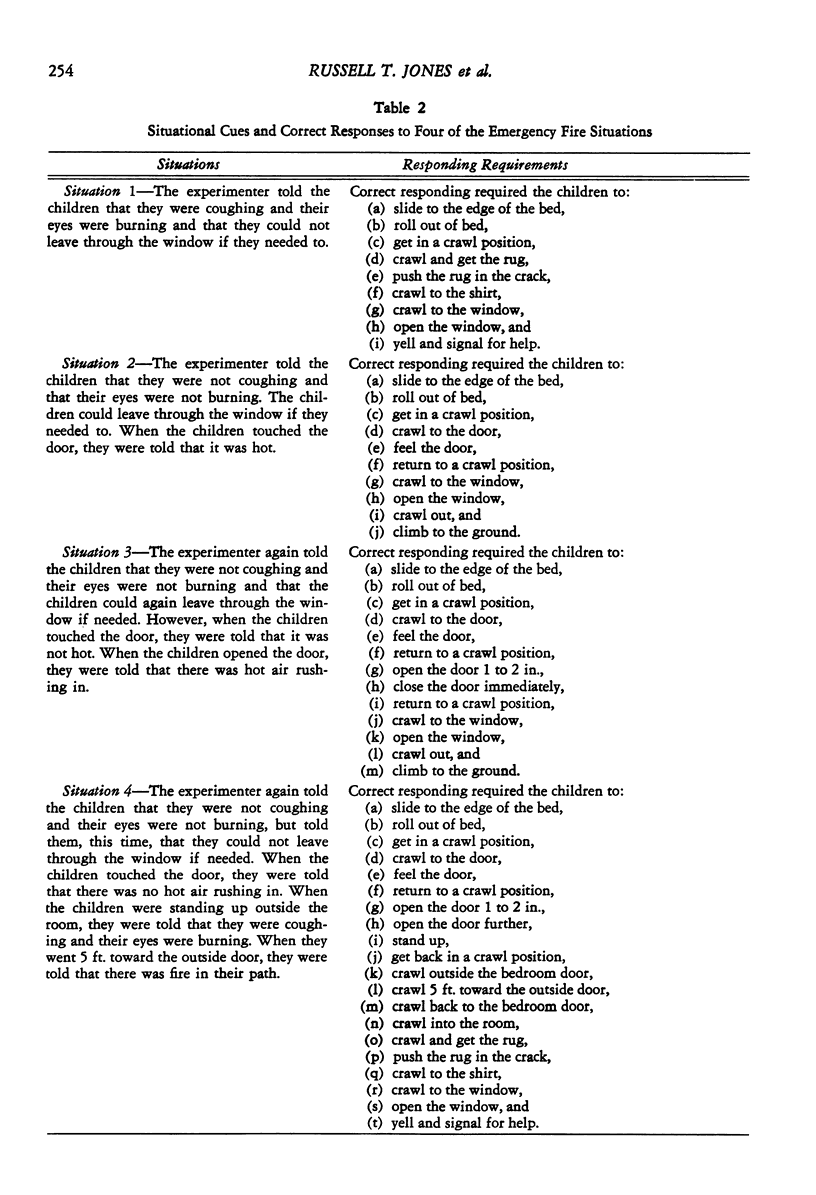
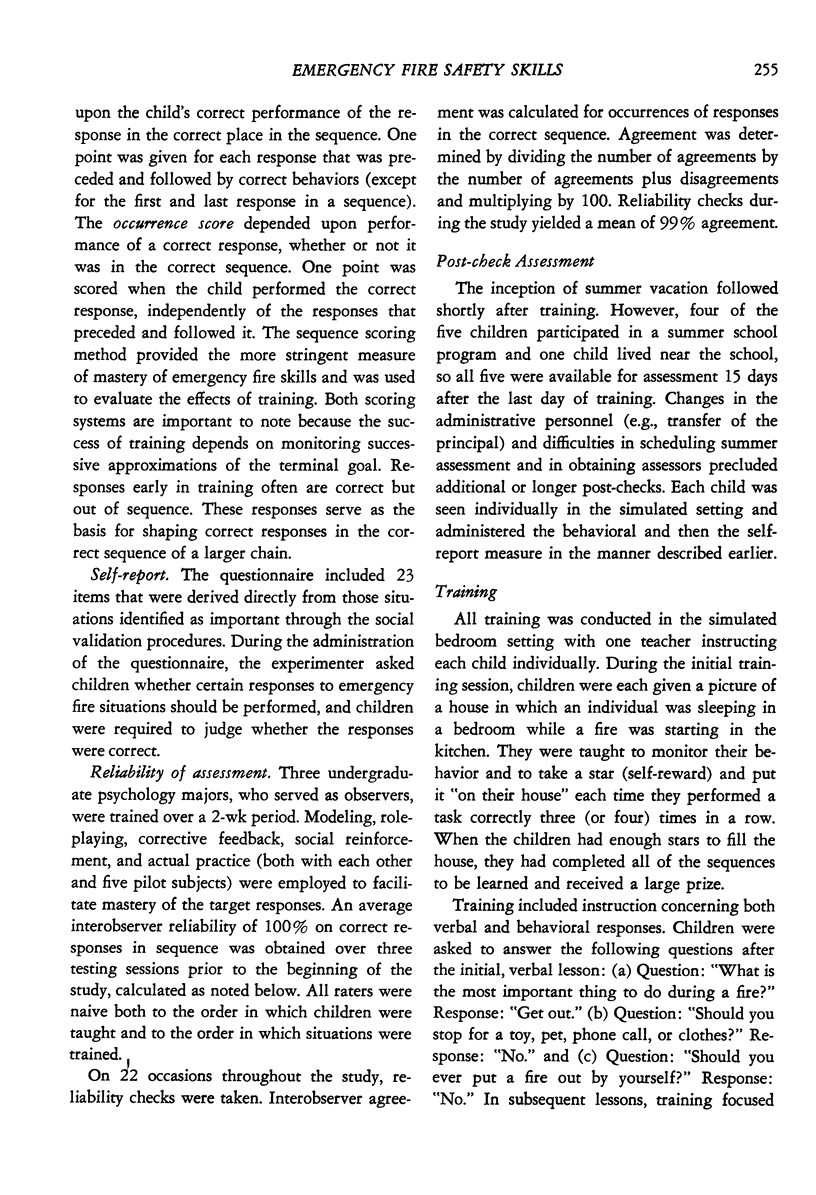
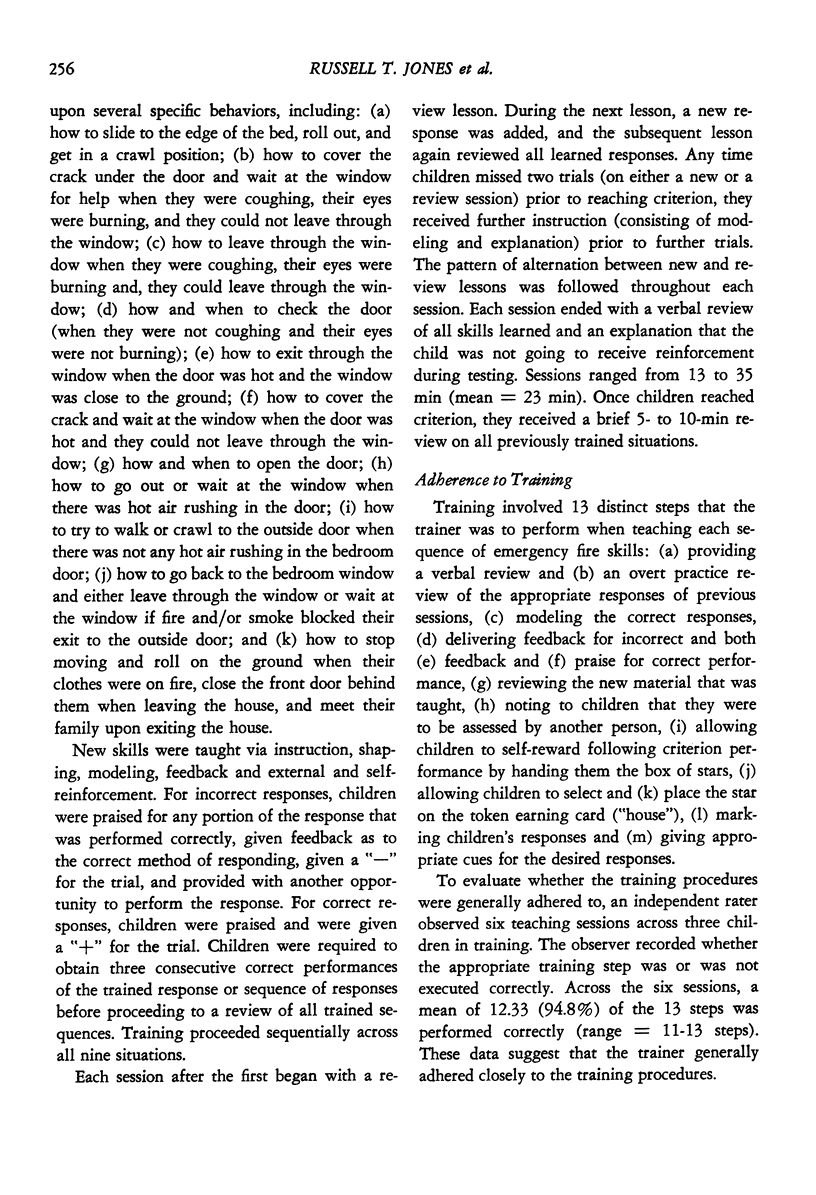
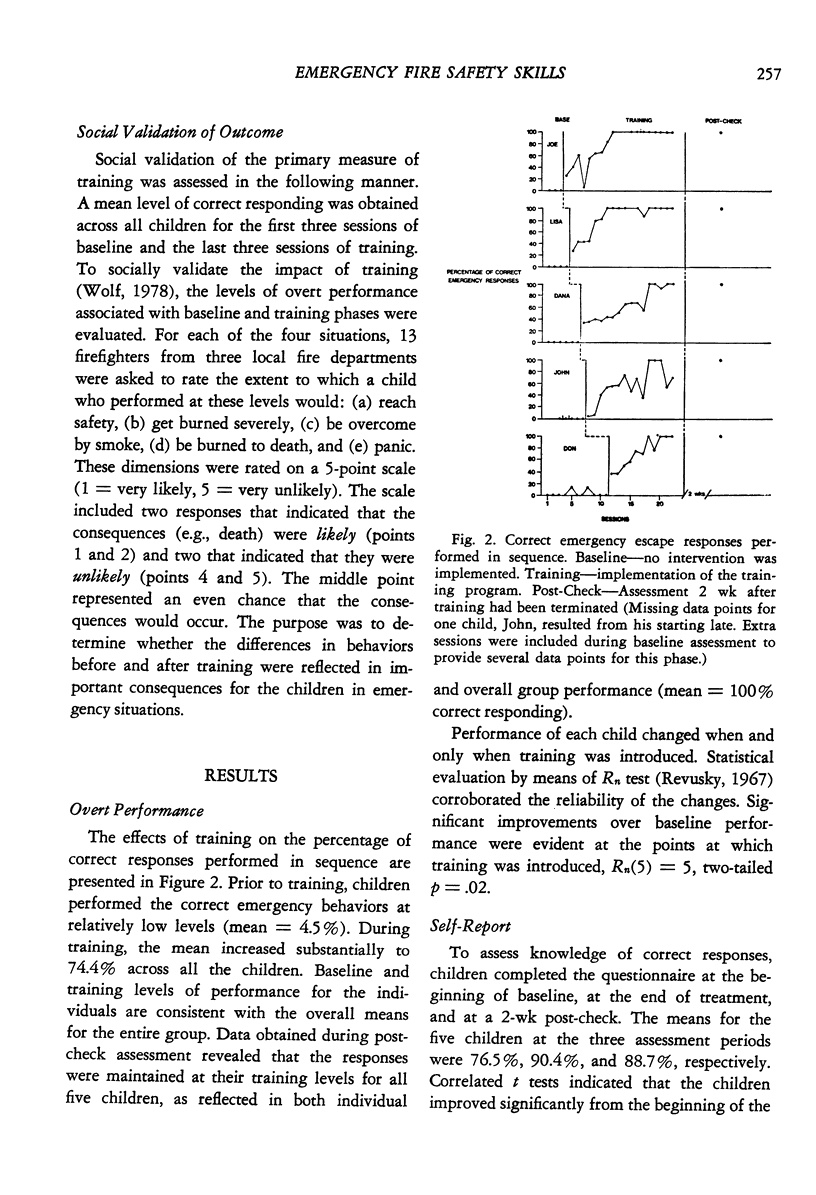
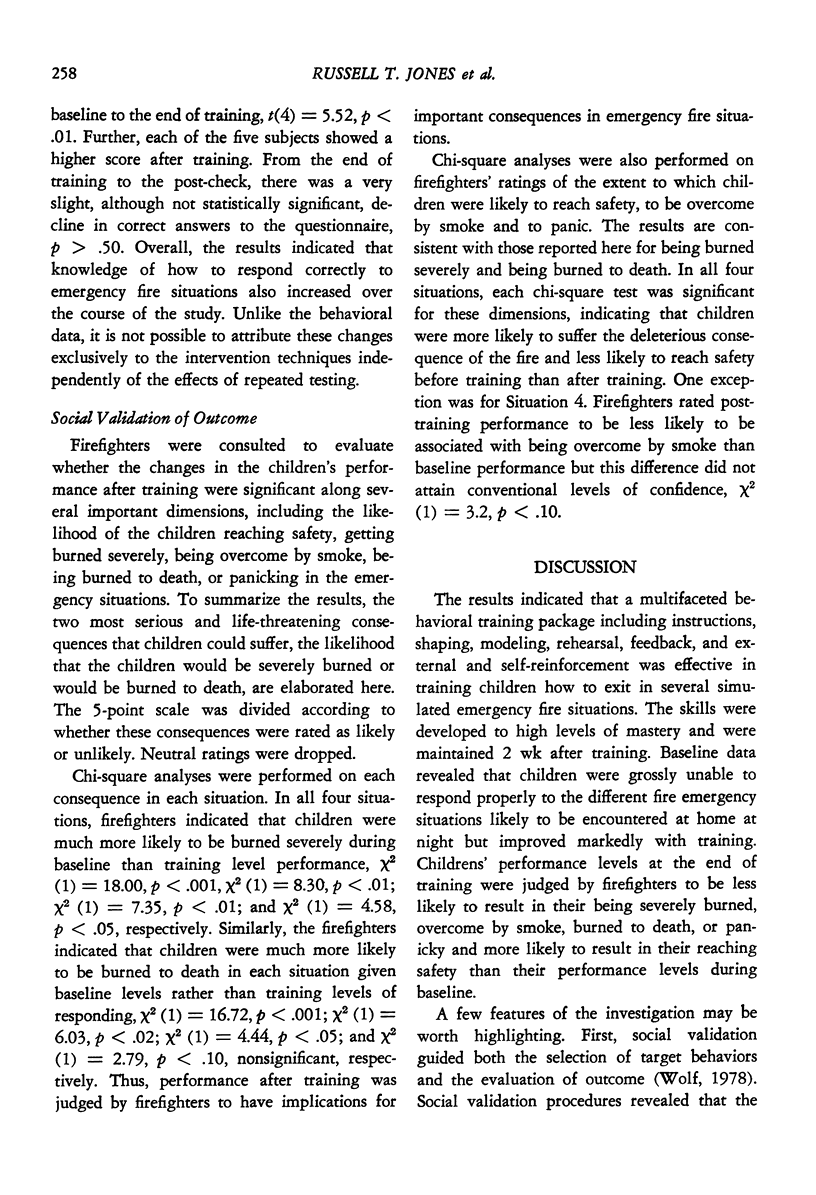
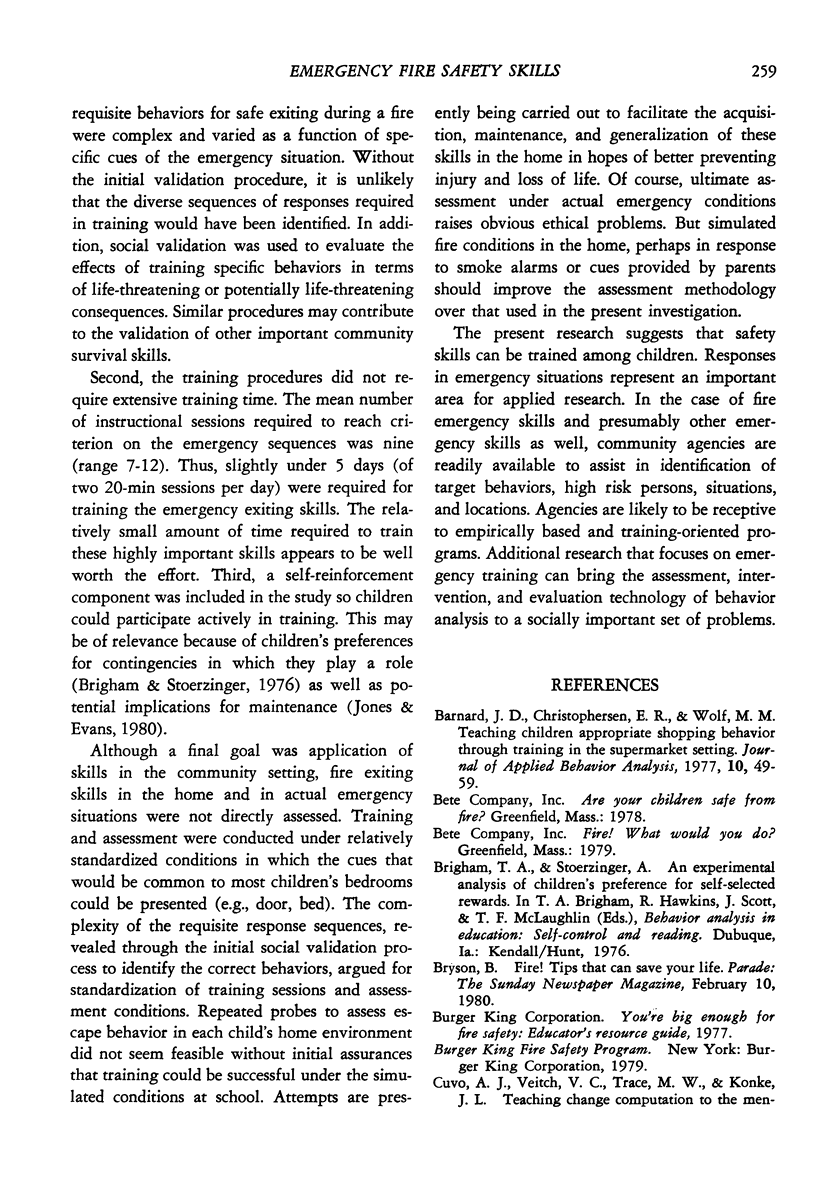
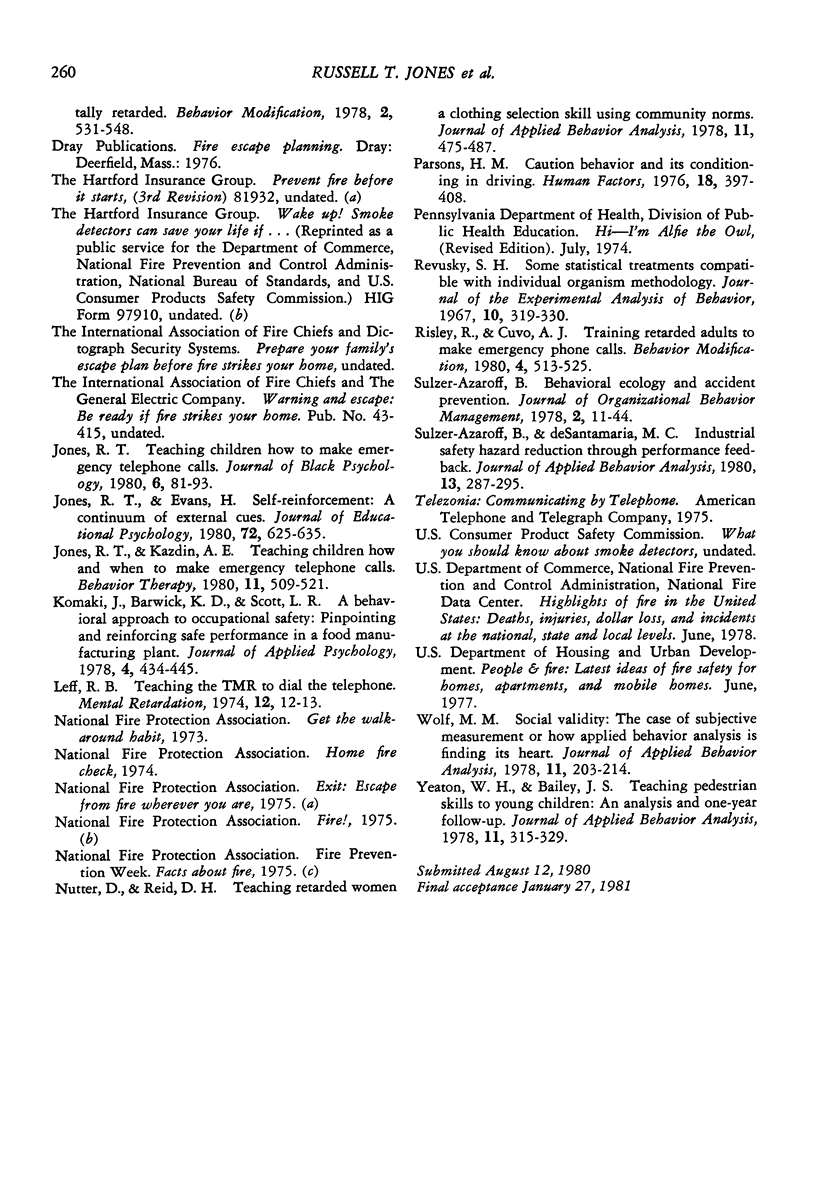
Selected References
These references are in PubMed. This may not be the complete list of references from this article.
- Barnard J. D., Christophersen E. R., Wolf M. M. Teaching children appropriate shopping behavior through parent training in the supermarket setting. J Appl Behav Anal. 1977 Spring;10(1):49–59. doi: 10.1901/jaba.1977.10-49. [DOI] [PMC free article] [PubMed] [Google Scholar]
- Komaki J., Barwick K. D., Scott L. R. A behavioral approach to occupational safety: pinpointing and reinforcing safe performance in a food manufacturing plant. J Appl Psychol. 1978 Aug;63(4):434–445. [PubMed] [Google Scholar]
- Nutter D., Reid D. H. Teaching retarded women a clothing selection skill using community norms. J Appl Behav Anal. 1978 Winter;11(4):475–487. doi: 10.1901/jaba.1978.11-475. [DOI] [PMC free article] [PubMed] [Google Scholar]
- Revusky S. H. Some statistical treatments compatible with individual organism methodology. J Exp Anal Behav. 1967 May;10(3):319–330. doi: 10.1901/jeab.1967.10-319. [DOI] [PMC free article] [PubMed] [Google Scholar]
- Sulzer-Azaroff B., de Santamaria M. C. Industrial safety hazard reduction through performance feedback. J Appl Behav Anal. 1980 Summer;13(2):287–295. doi: 10.1901/jaba.1980.13-287. [DOI] [PMC free article] [PubMed] [Google Scholar]
- Wolf M. M. Social validity: the case for subjective measurement or how applied behavior analysis is finding its heart. J Appl Behav Anal. 1978 Summer;11(2):203–214. doi: 10.1901/jaba.1978.11-203. [DOI] [PMC free article] [PubMed] [Google Scholar]
- Yeaton W. H., Bailey J. S. Teaching pedestrian safety skills to young children: an analysis and one-year followup. J Appl Behav Anal. 1978 Fall;11(3):315–329. doi: 10.1901/jaba.1978.11-315. [DOI] [PMC free article] [PubMed] [Google Scholar]


